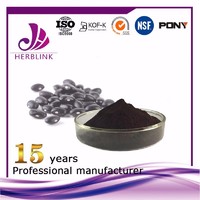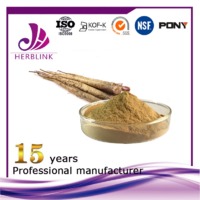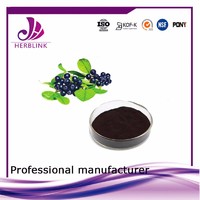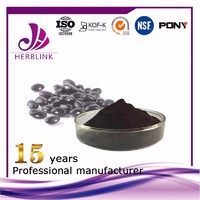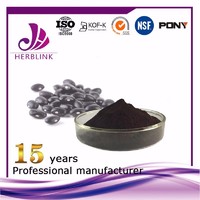Black soybean hull Extract Reduce blood pressure
Product Quick Detail
- FOB Price
- USD $99.00 / Piece
- Place Of Origin
- China
- Minimum Order
- 1
- Packaging
- N/A
- Delivery
- 15 Days
Specifications
-
- Latin Name: Glycine max(L.)Merr.
- Synonyms: black bean, lu bean, liao bean, lingwu bean
- Part of Used: hull
- Specifications: Anthocyanin 25%
- Appearance: Dark violet fine powder
- Application: Medicine, food additive, dietary supplement
What is Black soybean extract?
Glycine max was domesticated in northeastern China from the wild Glycine soja, the earliest evidence of cultivation dating back to over 3,000 years ago. Domestication is a process of trial and error and not an event. In the case of the soybean, this process probably took place during the Shang dynasty (ca. 1,700 - 1,100 BC) or perhaps earlier. By the first century AD the soybean probably reached central and south China, as well as peninsular Korea. The movement of the soybean within the primary gene center is associated with the development, consolidation of territories, and degeneration of Chinese dynasties.
Black soybean is also referred to as black bean, lu bean, liao bean, or lingwu bean. According to the theory of traditional Chinese medicine, black material can have an effect on kidney, and black soybean, being sweet-warm and innocuous, can
affect kidney and spleen as well as heart meridian. Black soybean is thought to have function in tonifying kidney and improving physique, dehumidification and diuresis, as well as resisting aging and prolonging life. Eating black soybean is believed to
improve skin, benefits look, replenish marrow, enhance strength, and increase appetite. Researchers have found that black soybean is highly nutritious, and is one of the five kinds of black food which are very popular in the market.
- Country:
- Business Type:
- Market:
- Founded Year:
- Address:
- Contact:yu zhang
Other products from Herb Extract
Relate products of Black soybean hull Extract Reduce blood pressure
Latin Name: Glycine max(L.)Merr. Synonyms: black bean, lu bean, liao bean, lingwu bean Part of Used: hull Specifications: Anthocyanin 25% Appearance: Dark violet fine powder Application: Medicine, food additive, dietary supplement What is Black soybean extract? Glycine max was ...
Benefits of taking Black soybean hull Extract supplements: Like some anthocyanins material has the following effect: >Reduce blood pressure >Reduce oxidized LDL cholesterol levels >Reduce inflammation >Reduce the chance of a heart attack >Reduce recovery time following a heart ...

